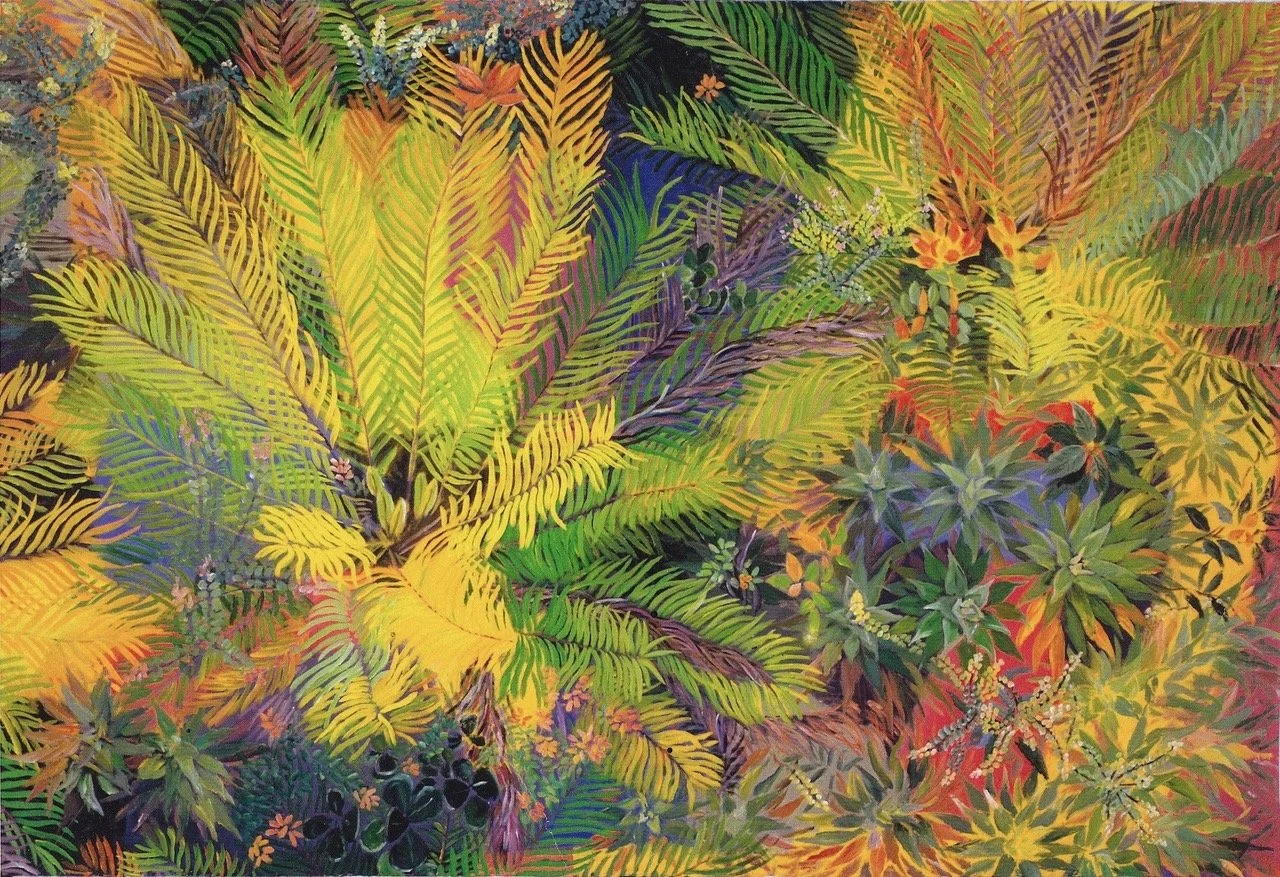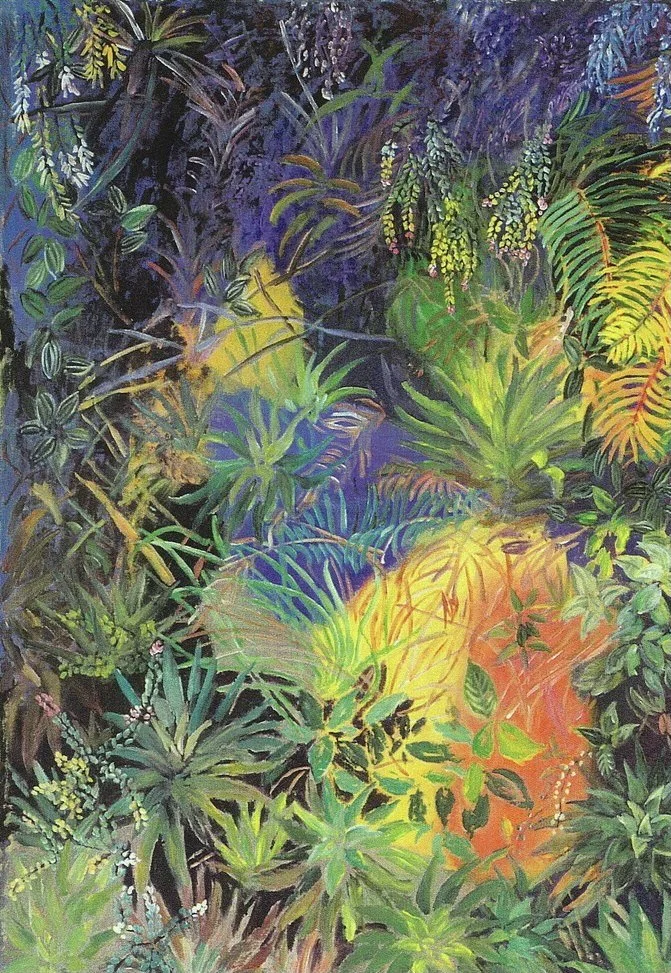















“In Colombia, we would wake each day at 5am and have coffee on our balcony, gazing at the rainforest which extended all around us. At that early hour one could see a snow-covered volcano in the distance, protruding from the forest canopy.”

“One January I climbed that volcano with a friend. There was often no ground beneath our feet as we clambered through tunnels of exotic plants and fauna. Eventually we reached a colorful plateau just below the crater and there we found a source of the Amazon River.”

“It was summer and all the plants were flowering. Using ropes and tent pegs we made a grid around the river source, dividing the area in twelve large rectangles. Over the next eighteen months I painted each rectangle until there was a vast painting of that exotic landscape.”

“When I made this artwork in 1998, I was thinking about human vulnerability in the face of climate change, deforestation and other man-made disasters.”

“By some extraordinary chance, this source of the Amazon is located beside the crater of an active volcano. Every few years the volcano erupts and destroys this entire ecosystem. But the rain is constant, the river continues to come up from the ground, and life begins again.”

The painting was created on four large panels like this which combine to form one the largest landscape paintings in existence.

This was exhibited at Bergamot Station in Santa Monica and people found themselves walking over a cloud forest composed of hundreds of exotic, flowering plants blowing in the wind. The gallery found that visitors spent an average 30 minutes with the artwork.

Damian, Cosima and Lewanne viewed the finished painting for the first time in a convent which was the only local place with a large enough floor.

This smaller floor painting was also created in Colombia. It describes the cycle of life in a primary forest of Mahoghany. A tree has fallen to the ground but small saplings are growing from the decay. One of those saplings will grow to fill the hole in the canopy.